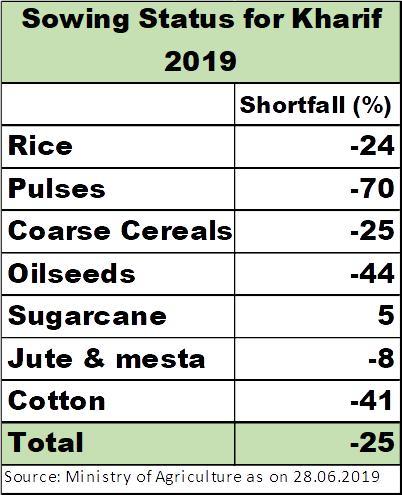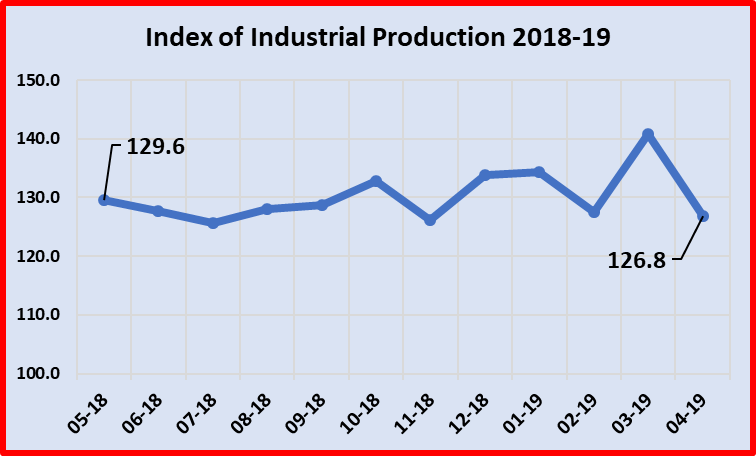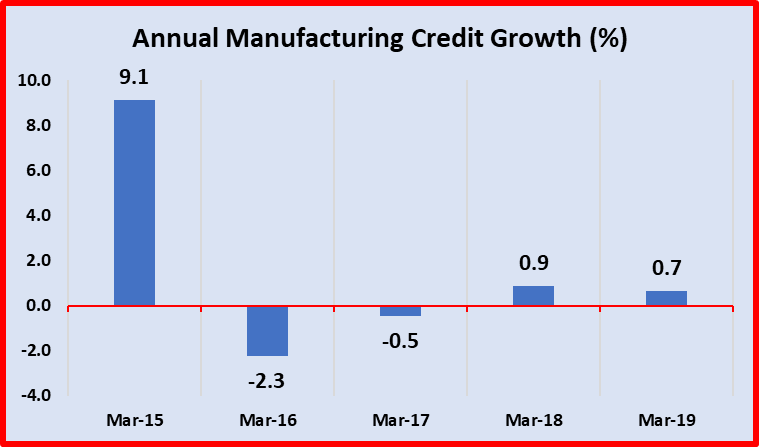Budget Blues for an Economy in Red
In February this year, the outgoing Modi government presented an Interim Budget since general elections were imminent. The ruling BJP won a decisive mandate again and so, it will be the same BJP government led by the same prime minister that will present the full Budget on July 5. The only change is that India now has a new finance minister in Nirmala Sitharaman – but that’s unlikely to change anything.
The economy of the country has, however, slowly but surely drifted into a deeper crisis. Some of it is systemic, some accidental. Whether the government has the wherewithal – both in terms of vision as well as resources – to tackle this crisis will become clear in the Budget. Have a look at the looming dark clouds.
Agriculture
The biggest worry at present is the uncertainty of monsoon rains. After four consecutive deficient monsoons (that left parts of the country drought-stricken), the current monsoon too is delayed. This has meant that farmers have postponed sowing, not knowing whether rains will come, and if so, when. In all, about 25% less area has been sowed for the kharif season compared to the normal, which is an average of the previous five seasons.

As can be seen from the table above, derived from the All India Crop Situation Report for the week dated June 28, shortfall in sowing is as much as 70% in pulses, 44% in oilseeds and 41% in cotton. For rice, it is 24%, similar to coarse cereals.
All this can change if the monsoon advances quickly. There is a lot of flexibility for the farmers in sowing times. But the sands are running out fast, the window is closing. Another deficient monsoon and the farmers’ misery will increase exponentially. The government may be banking on giving Rs 6,000 to every farmer (extending the earlier scheme which was limited to small and marginal farmers), but that is peanuts compared to the immense losses farmers will suffer if the monsoon falters. Remember: 55% of India’s cultivation is still rain-fed, that is, it draws sustenance from monsoon rains, not irrigation.
Industry
The situation is far more serious in the industrial sector. Over the last year, the Index of Industrial Production (IIP) has remained more or less stagnant, as can be seen from the chart below, derived from official data. What this means is that there is virtually no growth in industrial production across all sectors represented by the composite index. This means that there is no growth in employment.

Now, take a look at the chart below which gives the growth in bank credit to the manufacturing sector. This is a measure of how much expansion in productive capacity is taking place, because bank credit is used for that purpose primarily.

There is barely any growth after 2015. Industrialists are not wanting more credit because they don’t see any point in expanding productive capacities. Why? Because there is insufficient demand for their products.
There are several other indicators that confirm this industrial slowdown. Petroleum product consumption has slowed down. Consumption of industrial fuels, including furnace oil, pet coke, bitumen and others, declined by 8.4% and 9.3%, continuing with the weak trend marked since August 2018. Goods movement on Indian Railways, was growing at only 2.9% year on year in May 2019, slower than most months of 2017-18 and 2018-19, according to Centre for Monitoring Indian Economy (CMIE). Movement of pig iron, steel and cement also has slowed down. Air cargo traffic has slipped into negative territory in April 2019. At ports, commodity traffic increased, but mainly because of an 11% rise in oil imports.
Meanwhile, merchandise trade deficit increased to $30.7 billion in April-May of 2019, up from $28.3 billion in the same period last year. Export earnings grew by just 2.4% in this period compared to 12-13% growth last year, according to CMIE.
Passenger car sales have dropped to a 23-month low, and two-wheeler sales fell for the fifth month consecutively. Commercial vehicles sales declined for the sixth straight month. All of this shows that the industrial sector is in the grips of a crisis.
Employment
The continuing crisis in jobs will only deepen as the economy slows down, and additionally, if the monsoon fails. Unemployment is already steady at 7-8% according to CMIE. There were 404.25 million people employed in India according to the latest estimates from the January-April 2019 CMIE survey data. This means that 1.5 million jobs were lost since the same period last year and 4.7 million job losses since January-April 2017. In a country where new job creation is in doldrums, this steady losses in jobs is speaks of the grave crisis that is afflicting the economy and the people.
How the Modi government is going to address these strains – cracks, really – in the economy will be seen on July 5 when the Budget is presented. But going by past experience, there is not much hope.
Get the latest reports & analysis with people's perspective on Protests, movements & deep analytical videos, discussions of the current affairs in your Telegram app. Subscribe to NewsClick's Telegram channel & get Real-Time updates on stories, as they get published on our website.























